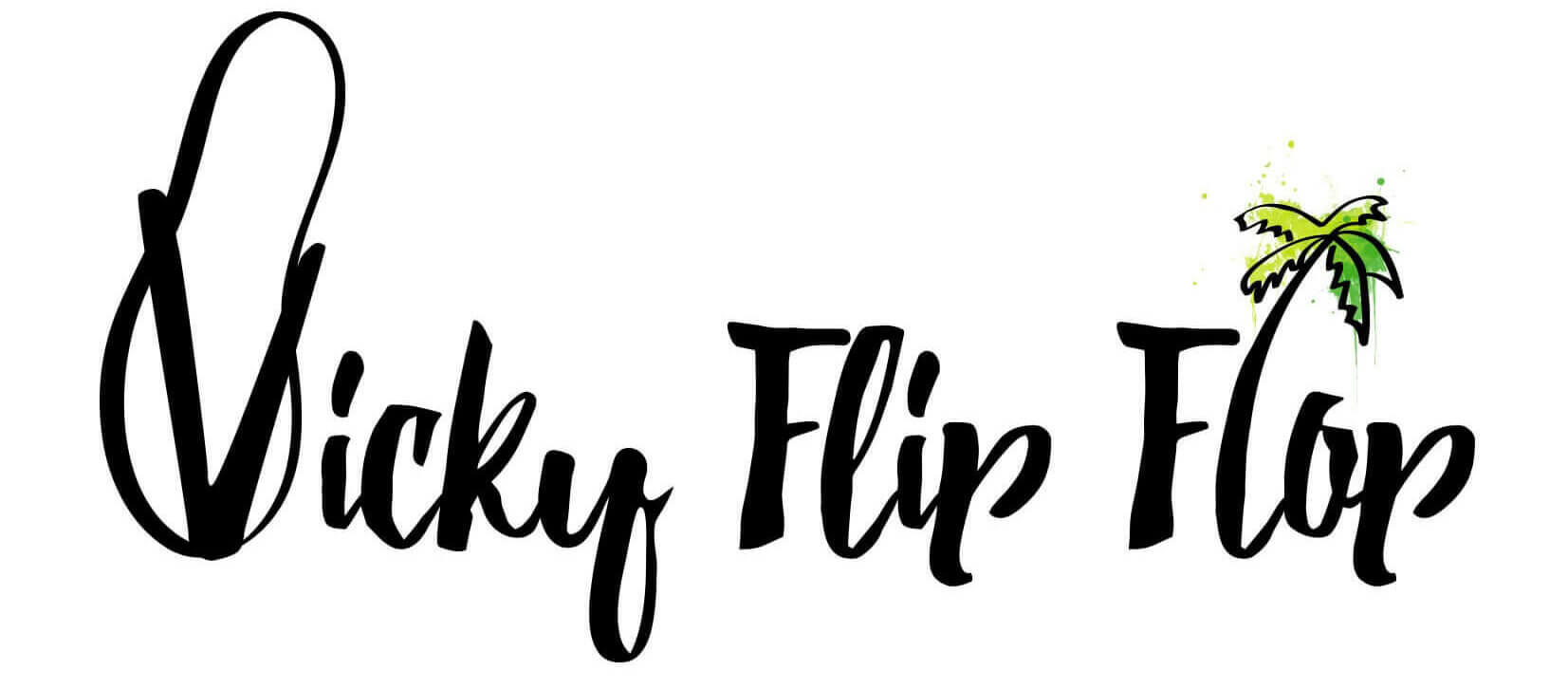Is Paddleboarding Hard? + 10 Paddleboarding Tips to Get Started
One of the first things people ask me about my SUP, is is paddleboarding hard? Short answer, no, not really. For the long answer, and a few paddle boarding tips, read on!
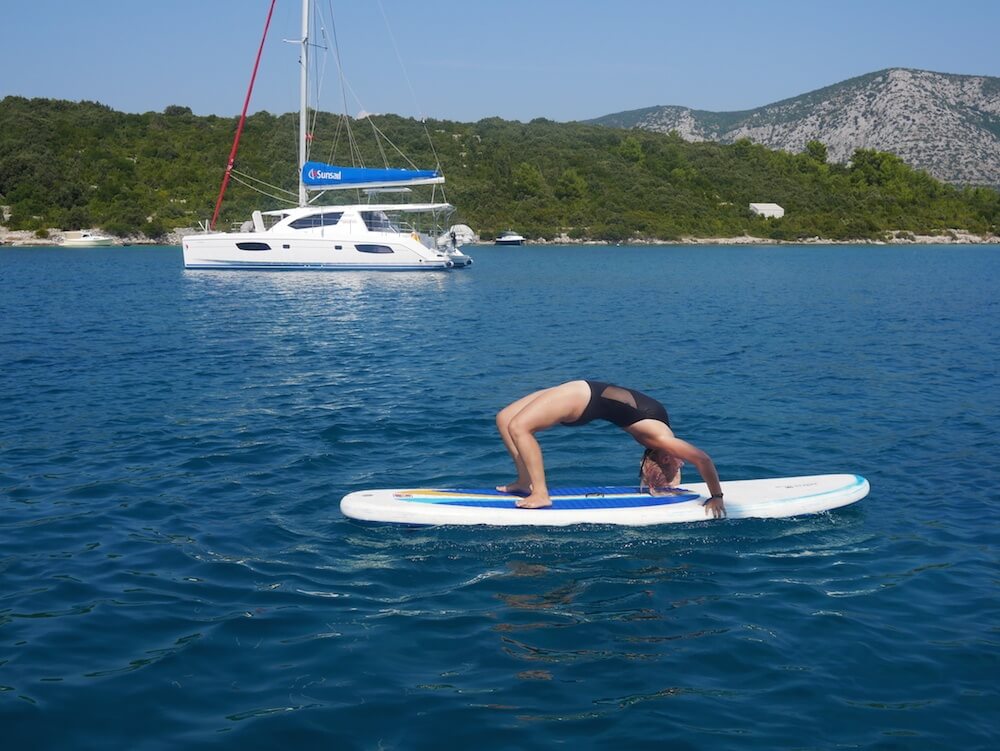
Paddleboarding provides an excellent core workout for your abs, back, arms and legs while also giving you some quality time on or near to nature, and the great outdoors. Whether you’re a beginner or an advanced paddler I’ve got 10 paddle boarding tips below to get started off right.
I’ve been paddleboarding for a few years now, and have tried it in Antigua, Aruba, Florida, and for the last two years, mostly paddle boarding in Hampshire, where live. I paddleboard year round, and yes, that includes paddle boarding in winter. I have been on a little break the past four months, as I’m about to have a baby, but I’m already looking forward to getting back on the water, once it feels like a good idea to do so!
I want to share some of my top tips to help you become a more proficient paddle boarder, and to answer the all important question – is paddleboarding hard?
Is paddleboarding hard?
Paddleboarding is best described as a cross between surfing and kayaking, depending on the water conditions.
Over the lockdowns, and the last two years, the water sport quickly became the newest trend. Paddle boards were even sold out for months in some cases – couldn’t make them fast enough! Paddle boarding basically involves being on top of an inflatable board and using your hands to push yourself across the surface of calm, flat waters in order to get exercise or enjoy nature from new perspectives.
I like to think of paddleboarding as my own private boat for exploring with friends.
Essentially, all you have to do is get on it, stand on it, and paddle – ideally without falling in. Unless it’s a lovely sunny day of course, and you need some refreshment.
10 paddleboarding tips to get started
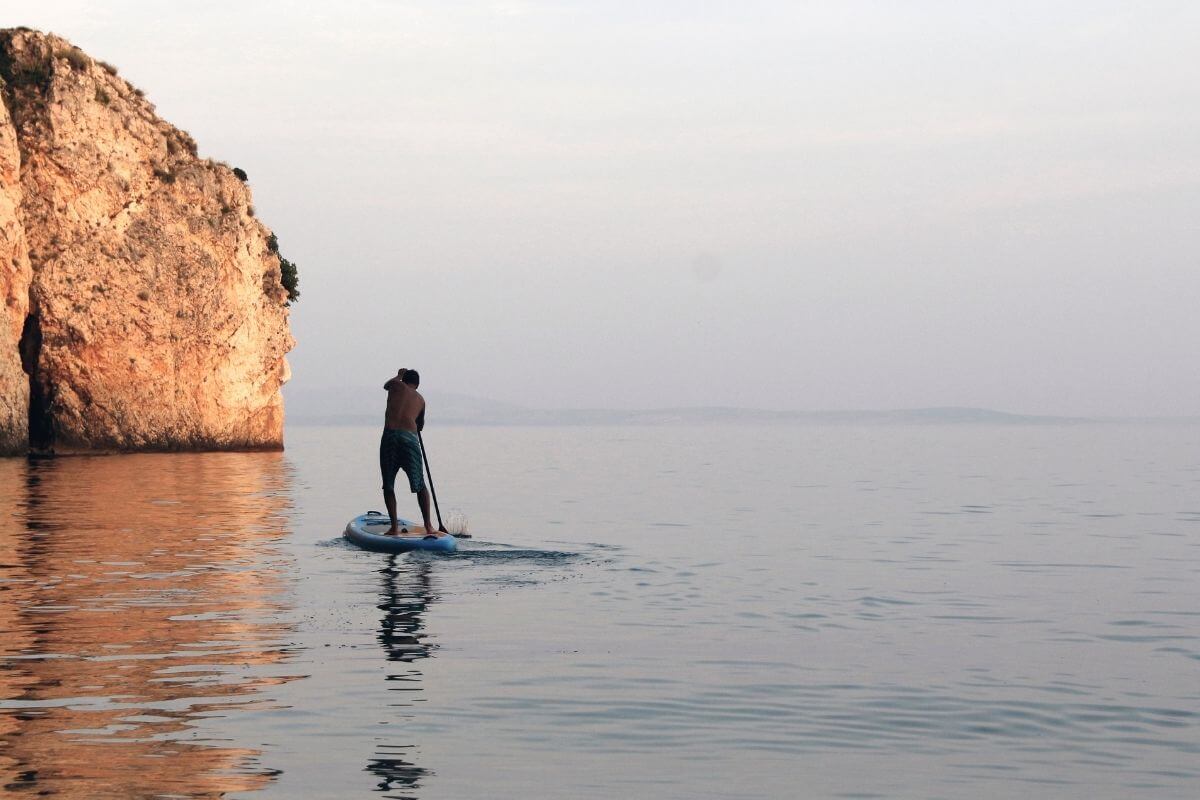
1. How to stand up on a paddleboard
1. When you first get on a paddleboard, it’s important to find your balance. Start on your knees, and then when you feel ok with that, look to the horizon to stand up. Don’t look down or you’ll fall in. From all fours put one foot forward, in the middle of the board, by the side of the handle. Bring the other one to join it.
2. With knees bent, rise up to standing. Keep a slight bend in the knees to take the pressure and strength of the water. Have one foot either side of the handle in the middle.
3. Keep your upright posture with shoulders squared – don’t lean forward or backward from either side.
4. Stay steady and use your stomach muscles to stay centred, and focused.
2. How to stay safe on your paddleboard
Paddleboarders of all ages can enjoy the sport. With that said, it’s important to note some safety tips before getting your feet wet in this activity:
1. Find a flat-water location with low waves and no currents – you’ll be more likely to fall off if there are any sudden changes in water level or momentum.
2. Wear sunscreen when out on the paddle board as well as sunglasses and an appropriate hat.
3. Drink plenty of fluids – fresh coconut water is a good shout.
4. Balance yourself by staying upright without bending forward much – crouching over makes instability worse.
5. Always wear a life jacket or PDF and don’t paddleboard alone. Some boarders may find that they have more difficulty with balance than others so having another person present to help if you fall in or something goes wrong is wise.
6. Avoid going out into rough seas as this increases your chances of getting injured and drowning while also increasing your chance of capsizing due to large waves which will make rescue difficult.
7. Try not go too far from shore as there are no guarantees how long rescuers would take before coming for you even when using other vessels such as kayaks or jets.
8. Always check the weather and winds for before, during and after – you don’t want to get stuck out there battling to come back again.
There are many dangers on the water, and paddleboarding is no exception. It’s important to remember that because your feet aren’t planted firmly into the board like they would be with a surfboard, paddlers can often lose balance or get knocked off of their boards when faced by strong currents or waves. This makes it especially dangerous for those who don’t know how to swim well enough should an accident occur in deeper waters where there may not be immediate help around.
Always use your leash!
3. Keep a good paddleboarding kit list
Paddleboarding is a great way to spend time in the sun. If you’re not sure what to wear on sunny days on the board, here’s what you need:
- All-terrain shorts and shirt for protection from UV rays.
- A paddleboard – there are different sizes with differing levels of buoyancy so be cognisant of that before buying one if possible. Check out my post on which inflatable paddleboard to buy here, if you want some advice.
- Some water shoes or sandals – you can read about the best paddleboarding shoes here
- Sunscreen lotion of at least SPF15
- Some water
- Some sort of waterproof or underwater camera to record your adventures.
You could always ask for one of these paddleboarding gifts for Christmas or birthday to keep costs down.
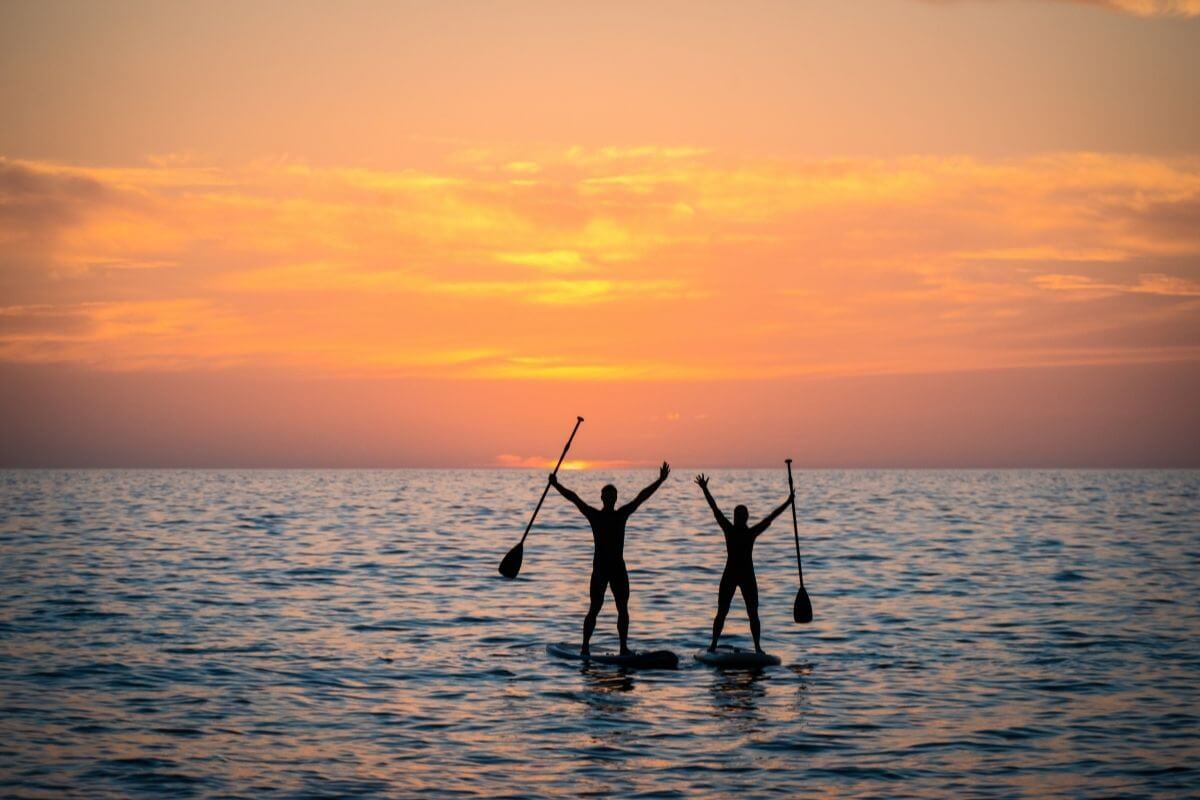
4. Tips for beginner paddleboarders
What’s the best way to learn how to paddleboard?
The key is just getting out there and trying. Don’t get intimidated by complicated, overwhelming instructions for beginners. The best way to get started standing up on a paddleboard is listed above.
5. Tips for advanced paddleboarders
Once you get the hang of it, try more advanced moves like catching waves or dancing on water.
Also, try different paddles and boards until you find one that works best for your body type. They can all have different results.
6. Benefits of paddleboarding
Paddleboarding is easy to do with a friend or family member; you can teach them in minutes!
The best part about paddleboarding, though, is the low impact on joints and muscles so it’s easy for people of any age or fitness level. It’s an incredible workout that will strengthen your core, legs and more. It’ll definitely help with increased balance skills as well as muscle coordination from paddling back and forth across the surface of water all day long.
Paddleboarding is a great way to enjoy the water, but it’s also good for your health. People who paddleboard experience increased cardiovascular endurance and arm strength.
Paddleboarding is a great way to get up close and personal with nature, and to let go of any stress you might’ve picked up in the day.
7. How to get back on your paddleboard
If you’re trying to work out if paddleboarding is hard, then you need to take into account how you’re going to get back on your board. Before you actually fall off the board, try different ways of getting back on by kneeling down, sitting down, or jumping up.
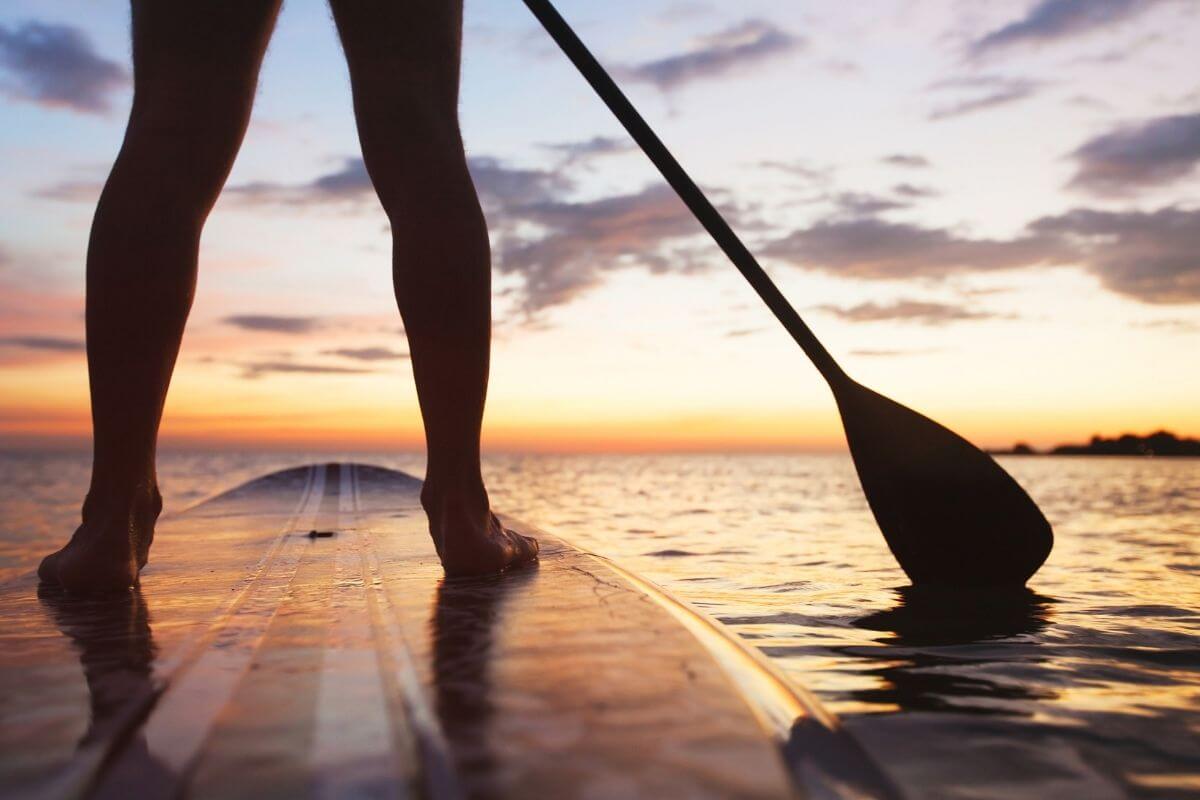
Here are a few tips for getting back on your paddle board:
1. Use your arms and legs together as you use them in any other water-based activity, such as swimming or snorkelling.
2. Lean inland (away from open sea), so that if you do tip over again it will be easier to recover yourself this time around.
3. Keep looking at where you want to go – looking down will throw you off balance.
To get back on your paddleboard when you’re in the water, it’s easiest to have a friend who can help. There are two ways they might be able to assist:
1. If their feet or knees are touching the board they can hold it steady while you crawl on.
2. If not, then take off one of your shoes (or flip-flops). Then lie down so that only half of your body is submerged underwater. With one hand grab onto the edge under where you’ve taken off a shoe with another arm reach for support from them and put pressure underneath yourself while they pull upward until both elbows meet above waist level; this should provide enough leverage for pushing upwards such as flipping over onto hands & knees first before returning upright position.
Paddleboards are made of foam or fiberglass, which makes them lighter than other boards so they do tend to flip up when you’re trying to get on them.
8. Go to interesting places with your board
Have fun exploring new places on water. You can go stand-up paddleboarding on lakes or rivers, oceans or canals.
Paddleboarding is a great way to have fun while exploring new places.
The first thing you need to know about choosing which kind of water best suits your needs is that all waters have their own unique properties so do some research before making a decision on which one will work best with your board.
Tips for paddleboarding
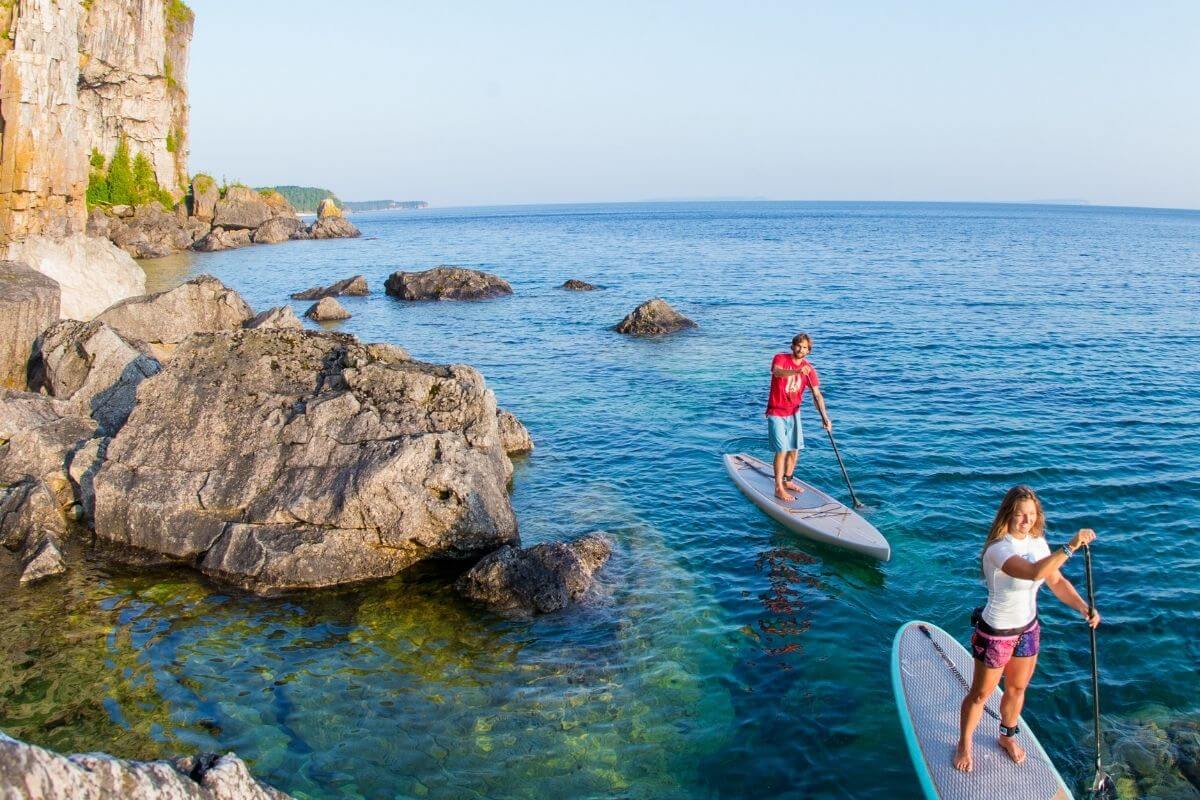
There are many different types of paddleboards these days but remember that some boards will be better for beginners than others depending on your weight, the water you want to go on, and your style of paddleboarding. Paddles come also come in several shapes and sizes as well which makes picking one more about personal preference than anything else.
Paddleboarding is a fun way to enjoy the water. For newbies, it’s always best to start with flatwater paddling in controlled environments like lakes or slow-moving rivers so you can get used to standing up on your board before taking them out into choppier waters where they may fall off and pick back up again if skills are not mastered yet.
Most importantly have fun. You’ll soon see that paddleboarding can be as difficult as you want it to be!
